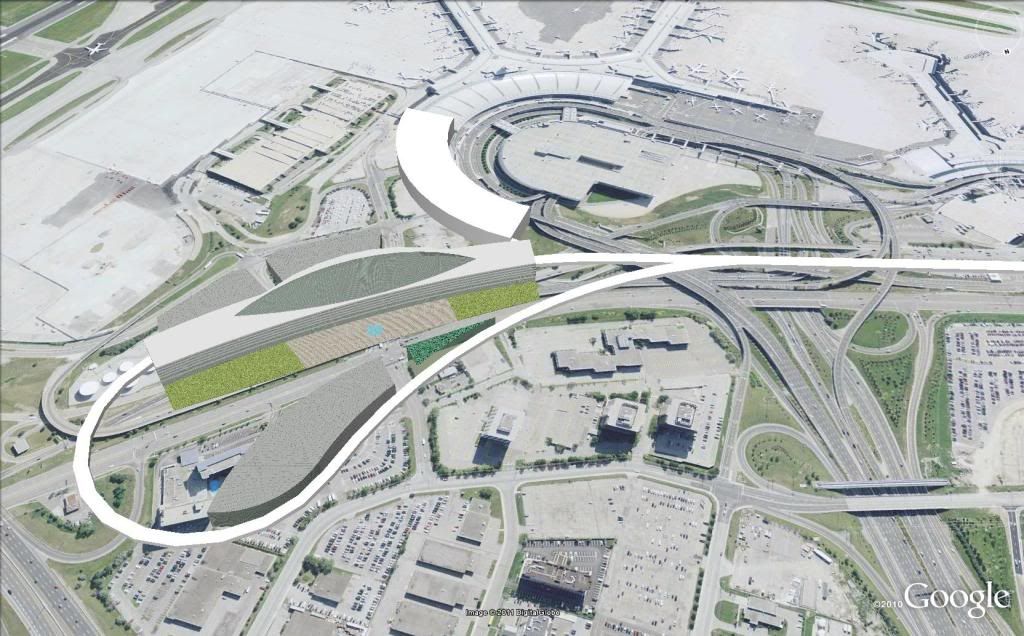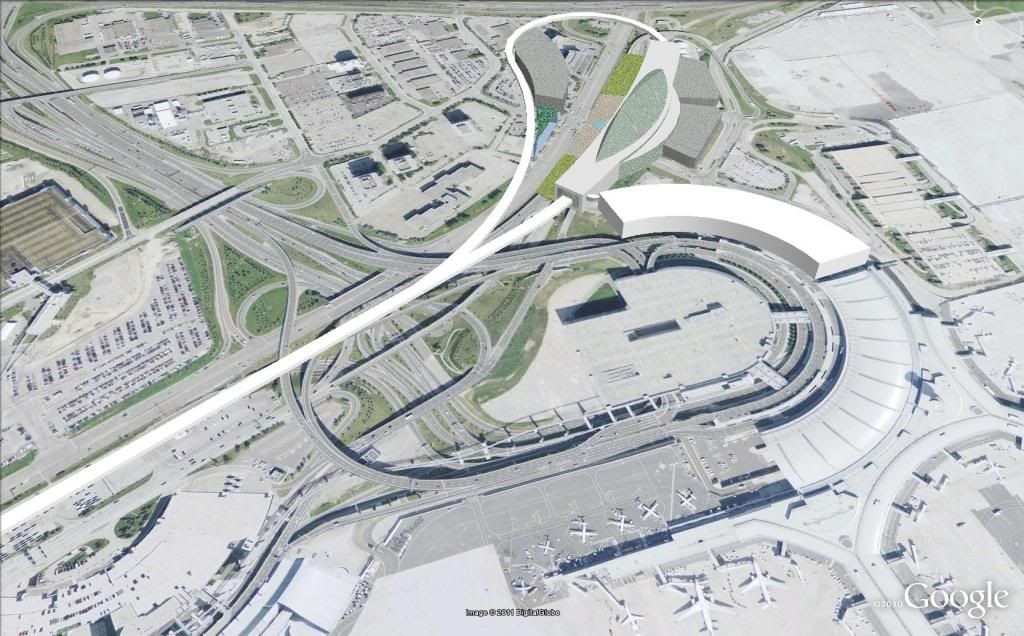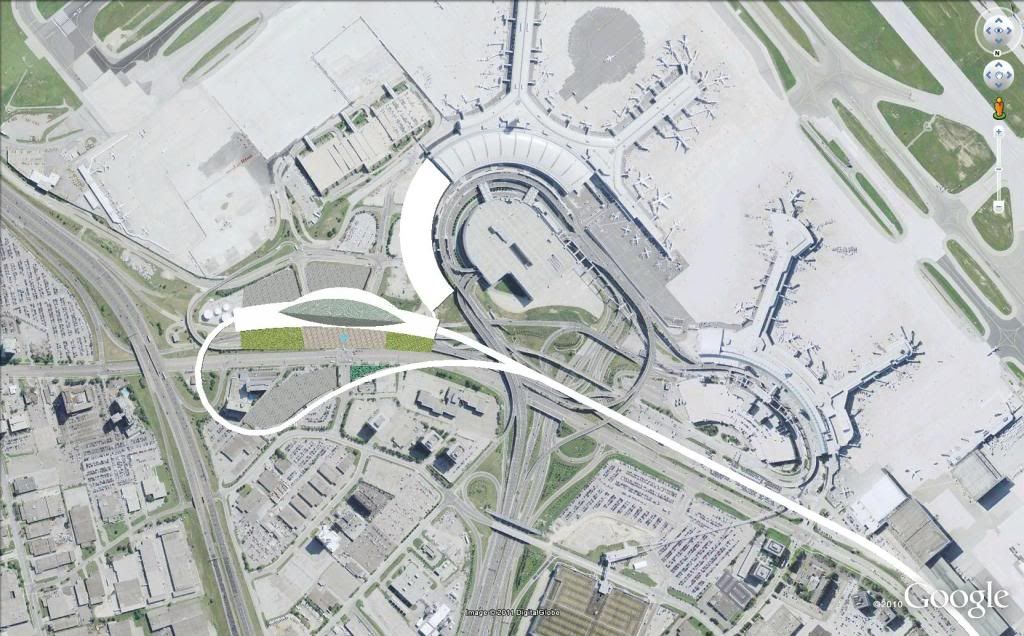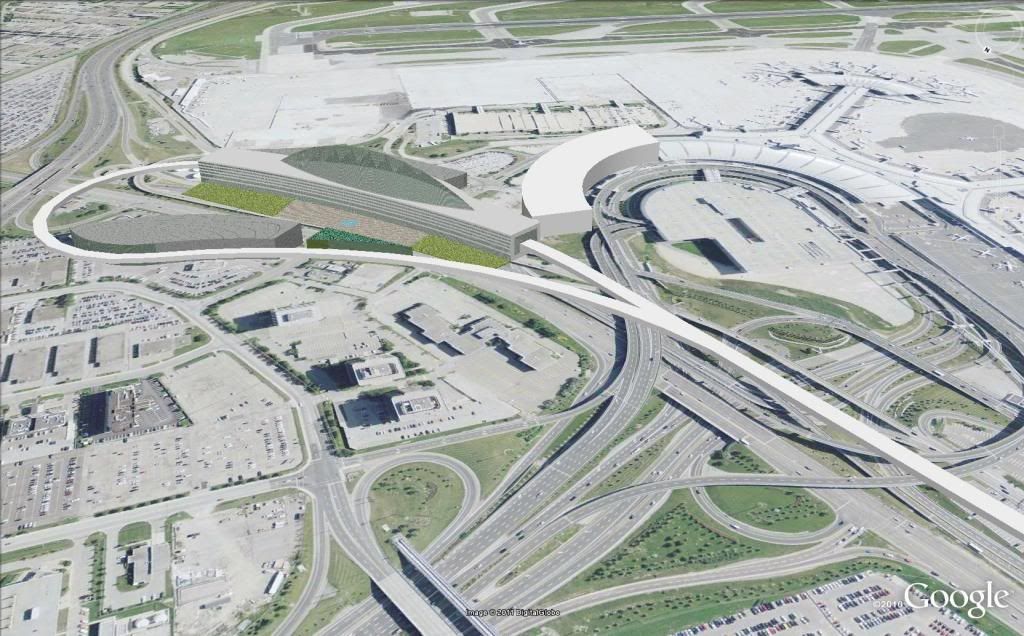Just a few. I still disagree with a through station at Pearson, but I've already discussed that ad-nauseum. Anything not mentioned below, I have no concerns with.
The line would continue east along the Guelph Sub before swinging north to bypass Guelph. Trains serving Guelph would divert to the existing, upgraded route. The high-speed line would then roughly follow the existing rail corridor east to Brampton, with a bypass of Georgetown. CN's main freight line would be shifted into the 407 corridor. A station in Brampton is optional, since the Pearson station would serve as a hub for that part of the GTA.
Just remember that this is escarpment country, and that deviating from the existing corridor may cost a lot more than you think when the existing corridor is already very straight. I honestly wish i had more detailed topographic data for this route so I could make sure the one I have is feasible, but anything is possible.
In my map (click for detail), I've included a bypass of both Acton and Rockwood because it would be impossible to straighten these curves effectively and not destroy the towns in the process. However, the route through Georgetown is pretty much dead straight, so I don't see why 3 or 4 rail overpasses can't be built through the town.
If we are looking at ultimate speeds of 300km/h+, then my ultimate solution
would look like this. It would basically necessitate the construction of a tunnel between the Junction and College Ave underneath the Grand River, the Golf Club and a bunch of century homes. I'm not sure this kind of tunnel would be feasible in the sandy soil that the Grand River Valley has, but it it is, it would be awesome, as it is also the most direct usable corridor between Pearson and Kitchener.
But in the meantime, I see no issues with electrifying and adding passing track for the existing rail corridor and to run the occasional express train to build up demand for a high speed line, and for future local service.
At Cobourg, the line would shift to an alignment around 10km north of the 401. That does cause some issues at Kingston, where the station would be a bit distant from the city. Then again, the current station is hardly right downtown. Express buses should cover the distance quite quickly.
While it would be almost impossible to get a station into downtown Kingston, I see few real problems with the location of the existing station if the track were realigned to follow to 401 as soon as it left Kingston.
East of Kingston, the line would follow a roughly straight line north-east to Smith's Falls. From there, it would follow the existing VIA-owned corridor to Ottawa. The Ottawa station is a tough one. I'd love nothing more than to revive the wonderful old station that's now the Government Convention Centre. It would be quite an ambitious project, though, and would have to be done almost entirely with a tunnelled loop. The existing VIA station is also a beautiful building and it will be connected to downtown by the new rapid transit line. That's probably a reasonable compromise.
I actually see a different scenario here in which the high speed track is split. The Northern track would follow the existing train route to Ottawa's Via Station as it exists with a few track upgrades. The southern line could be constructed through the airport to 300km/h standards, serving the Ottawa Airport directly by skirting along the north edge of Barrhaven, and the south edge of Davidson Road to reconnect to the Alexandria Subdivison. I would also love to see the downtown Ottawa station be re-utilized, but it is a project of the National Capital Commission to reconnect it.
East of Ottawa, it would follow the old M&O line that's now owned by VIA. A by-pass of Hudson would apparently be needed and I'd want to try to build a dedicated high-speed corridor as far into Montreal as possible. Trains stopping at Trudeau airport would divert into the existing station cavern at the terminal building. The Montreal terminal would be Central Station. Its approach tracks would have to be rebuilt a bit to get speeds up. VIA trains really crawl through Griffintown.
I'm not as familiar with this part of the country, so if a more direct route is feasible, then by all means it should be built, but if not, a rail connection between the CN Alexandria Sub and the CP Dorion Sub as illlustrated in the VIAfast proposal and
here would be doable.
I pretty much agree with the entirety of the Quebec Route, but am not sure how a Trois-Rivieres bypass could be built.
The line would be built to 300+ km/h standards and would aim to replace air services as much as possible in the corridor. Air Canada and other airlines would be asked to participate and code-share on routes within the corridor. That's why the good and direct connections at Trudeau and Pearson are very important.
Also add Ottawa MacDonald-Cartier Airport to that codesharing list.
I just though of a couple ideas of how to make the people mover extension/replacement more convenient for airport customers. First, people who have codeshared flights would wait in a dedicated queue for trains from general foot traffic and would receive priority boarding to the airport transit system and codeshared trains. Second, an independent ticket agent can be placed at each of these terminals in addition to baggage handlers to further increase the customer service experience.








